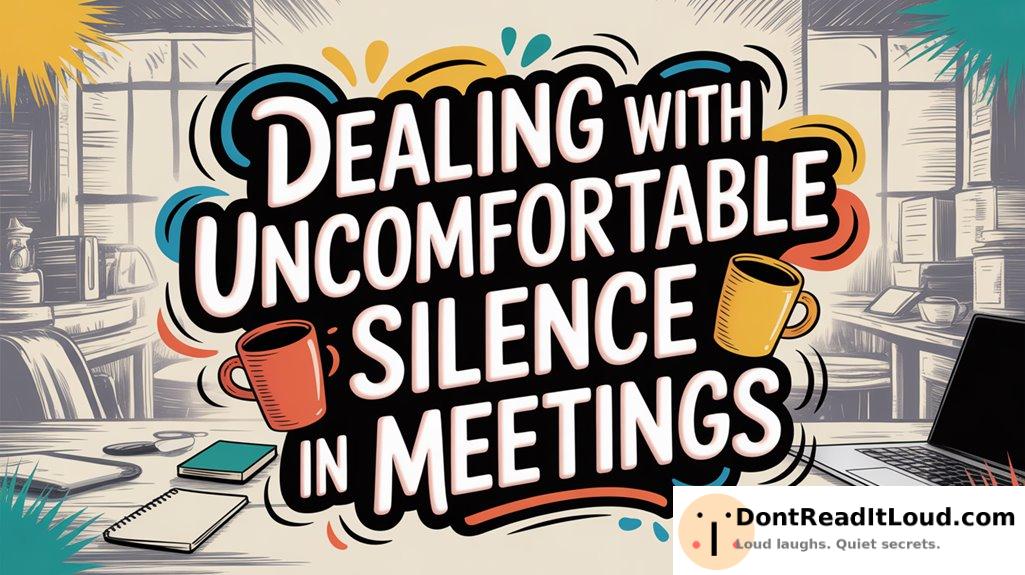
Recognize that pauses in meetings are a normal part of conversation. Silence isn’t always negative. Use active listening and offer verbal affirmations to ease tension. Encourage quieter members with thoughtful prompts. Humor can lighten the mood and help everyone relax. View silence as a chance for reflection or a mental break. By changing your perspective, you can make silence a useful part of meetings. Explore more ways to improve your meeting dynamics.
When you’re in a meeting and the conversation suddenly halts, it can feel like the silence stretches on forever. Your mind starts racing: Did someone say something awkward? Is everyone just zoning out? Or maybe they’re all silently plotting to overthrow the meeting leader and establish a new regime. Before you imagine office coups, just take a deep breath. Silence isn’t always awkward if you know how to handle it.
First, focus on active listening. It may not make you a superhero, but it can rescue you from awkward moments. Instead of aimless nodding, show real engagement with the discussion. Add a timely “Hmm, interesting!” or “I see what you mean,” and watch the silence fade away.
Next, encourage others to join in. A gentle nudge often brings even quiet people into the conversation. Rather than barking out orders, invite participation with, “Hey, Bob, you always have great insights. What do you think about this?” It’s like giving a verbal head scratch that gets ideas flowing.
If Bob stays quiet, try asking, “Does anyone else have thoughts on this?” It’s the meeting version of a teacher calling on the class, and it often spurs people to speak up.
Don’t forget the power of humor. A lighthearted comment can break the tension instantly. You could say, “Wow, it’s so quiet, I can hear my career choices echoing.” Laughter often helps restart the conversation.
If none of that works, remember that silence isn’t always a bad thing. Sometimes, it’s simply a chance for everyone to think before moving forward. Embrace it as a brief mental recharge.
Conclusion
In meetings, uncomfortable silence can feel intimidating, but you have strategies to address it. Embrace pauses to collect your thoughts or invite others to share theirs. Ask open-ended questions to spark discussion and support a collaborative environment. Silence isn’t always negative; it can encourage reflection and fresh ideas. Stay attentive, trust your instincts, and turn awkward moments into opportunities for growth and better understanding.



